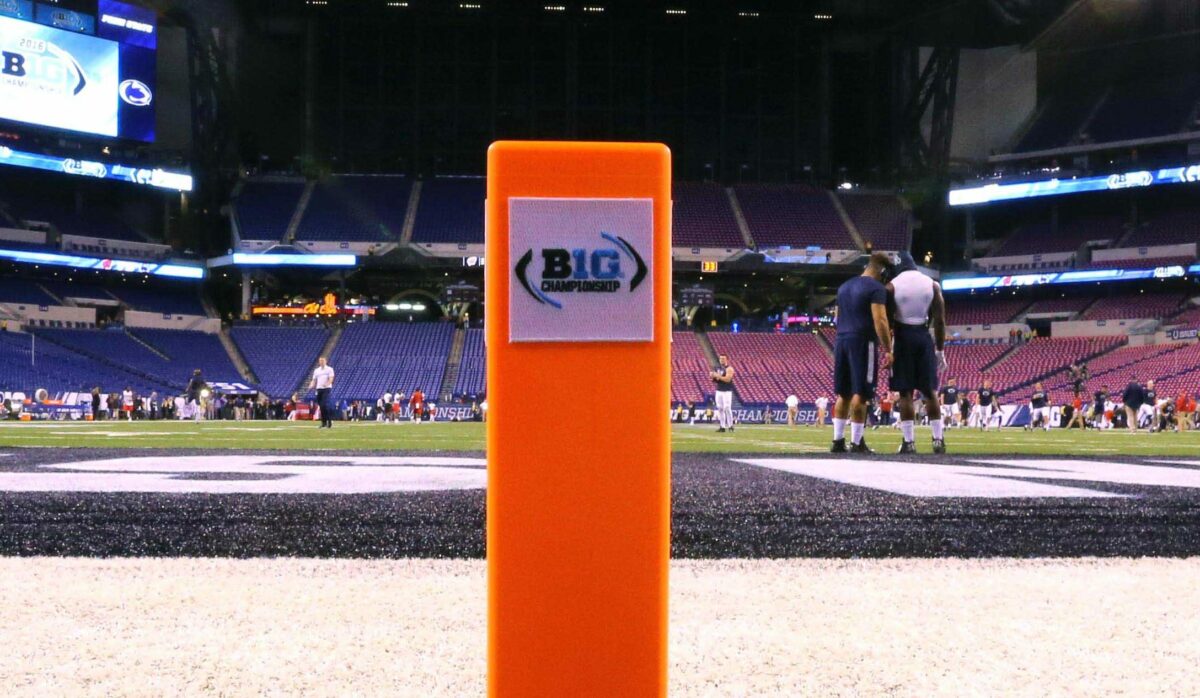The Big Ten is a very big conference nowadays with 18 teams and no divisions, following chaotic conference realignment nationwide with the additions of Oregon, Washington, USC and UCLA.
Obviously, all these teams can’t play everyone in the conference in a single season, and without the East and West divisions, it may be challenging to figure out which two teams will play in the Big Ten championship game if there are ties at the top of the standings at the end of the regular season.
While conference titles alone are important, there are also College Football Playoff implications on the line because the four highest-ranked conference champs get top seeds and first-round byes.
Here’s a look at the Big Ten football tiebreaker rules in 2024, should we need them.
Big Ten football championship game tiebreaker rules in 2024

The 2024 Big Ten football championship game is set for Saturday, December 7 at 8 p.m. ET at Lucas Oil Stadium in Indianapolis, and the top-2 teams will face off. But without the East and West divisions (RIP Legends and Leaders), how will the conference determine which teams play for a title if there is a tie?
If there is a two-team tie in the Big Ten standings at the end of the regular season, the conference will use these considerations to break it, per Big Ten tiebreaker rules:
1. Head-to-head game winner
2. Win percentage among common conference opponents
3. The records of the two tied teams will be compared based on record against common opponents with the best conference record and proceeding through the common conference opponents based on their order of finish within the conference standings
4. The records of the two tied teams will be compared based on the best cumulative conference winning percentage of all conference opponents
5. The representative will be chosen by the by the highest ranking by SportSource Analytics (team Rating Score metric) following the regular season
6. Random draw among the tied teams conducted by commissioner or designee
If there’s a two-way tie for first in the Big Ten and the tied teams previously played each other, the winner of that game is the top seed. If the tied teams didn’t previously play each other, the two-way tiebreaker rules apply.
If there is at least a multi-team tie in the Big Ten at the end of the regular season, the conference will consider these factors to figure out the single winner of the tiebreak. But if it’s a tie after the single tiebreak winner is selected, the Big Ten will use these factors to break it. And if the tie is reduced to two teams, the two-team tiebreaker rules apply.
1. The records of the three (or more) tied teams will be compared based on winning percentage in games among the tied teams:
1A. If all teams involved in the tie did not play each other, but one team defeated all other teams involved in the tie, the team that defeated all other teams in the tie is removed from the tiebreaker, and the remaining teams revert to the beginning of the applicable tiebreaker process (i.e., two team or three or more team tie)
1B. If all teams involved in the tie did not play each other and no team defeated all other teams involved in the tie, move to the next step in tiebreaker
2. The records of the three (or more) tied teams will be compared based on winning percentage against all common conference opponents played by all other teams involved in the tie
3. The records of the three (or more) tied teams will be compared based on winning percentage against the next highest placed common opponent in the standings in order of finish
4. The records of the three (or more) tied teams will be compared based on the best cumulative conference winning percentage of all conference opponents:
4A. In the event of an unbalanced schedule (i.e., less than nine conference games are played), the records of the three (or more) tied teams will be compared based on the best cumulative conference winning percentage of all conference opponents, regardless of how many conference opponents each team played. If winning percentage is equal for all conference opponents, move to next step in tiebreaker
5. The representative will be chosen by the by the highest ranking by SportSource Analytics (team Rating Score metric) following the regular season
6. Random draw among the tied teams conducted by commissioner or designee
[lawrence-auto-related count=3 tag=421393249]
